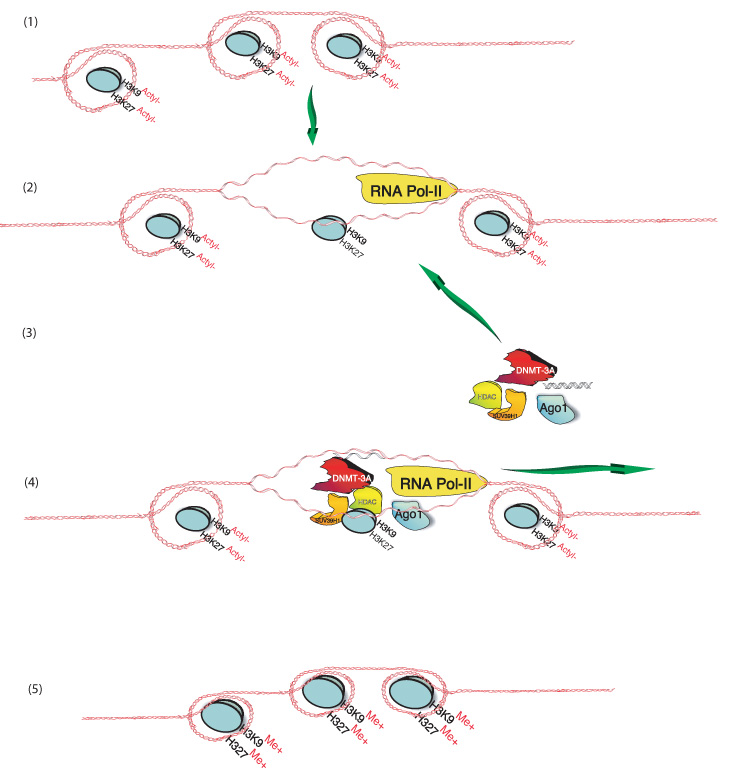
| Model of TGS | Levtivirus | |||||||||||
| Publications | Vectors | |||||||||||
| Lab Members | Contact | |||||||||||
Proposed Mechanisms for TGS in S. Pombe vs. Humans
Two models for siRNA mediated TGS have been proposed, either an RNA/RNA or a RNA/DNA mediated mode of silencing. In S. Pombe (A) siRNAs may interact with a long non-coding transcript which spans the targeted chromatin (1) subsequently allowing the RITS/RdRP complex to localize to the targeted region (2) resulting in gene silencing (3)(proposed by R. Allshire, personal communication). Alternatively, siRNA mediated silencing may function through an RNA/DNA intermediate. The siRNAs may gain access to the targeted DNA by the effects of RNA Pol-II opening up the targeted region (4) for the siRNA/RITS/RdRP complex to gain access (5) leading to gene silencing (6).

Model for siRNA mediated TGS in Human Cells.
Transcriptionally active genes are targeted (1&2) by the nuclear localized siRNA. The siRNAs associate with DNMT3A (3). The DNMT3A complex may interact directly or be bound by HDACs and/or Suv39H1 (Fuks, F. et al, 2001 EMBO) (3), Ago-1 may also be active at this or a prior step to unwind the siRNA? The antisense strand from the siRNA probably then directs the siRNA/DNMT3A complex with or without the HDACs and/or Suv39H1 or EZH2 (Vire E. et al Nature 2005) to the targeted promoter (4). Next, HDAC can deacetylate the Histone 3 Lysines 9 and/or 27 which would then permit Suv39H1 or EZH2 to methylate H3K9 and H3K27 respectively (DNMT3a has been shown to bind and be directed by EZH2 (Vire E. Nature 2005) (5). Resulting in the initial silencing of transcription at the RNAPII targeted promoter (5). If the silencing is re-enforced the gene may become methylated and permanently silenced

